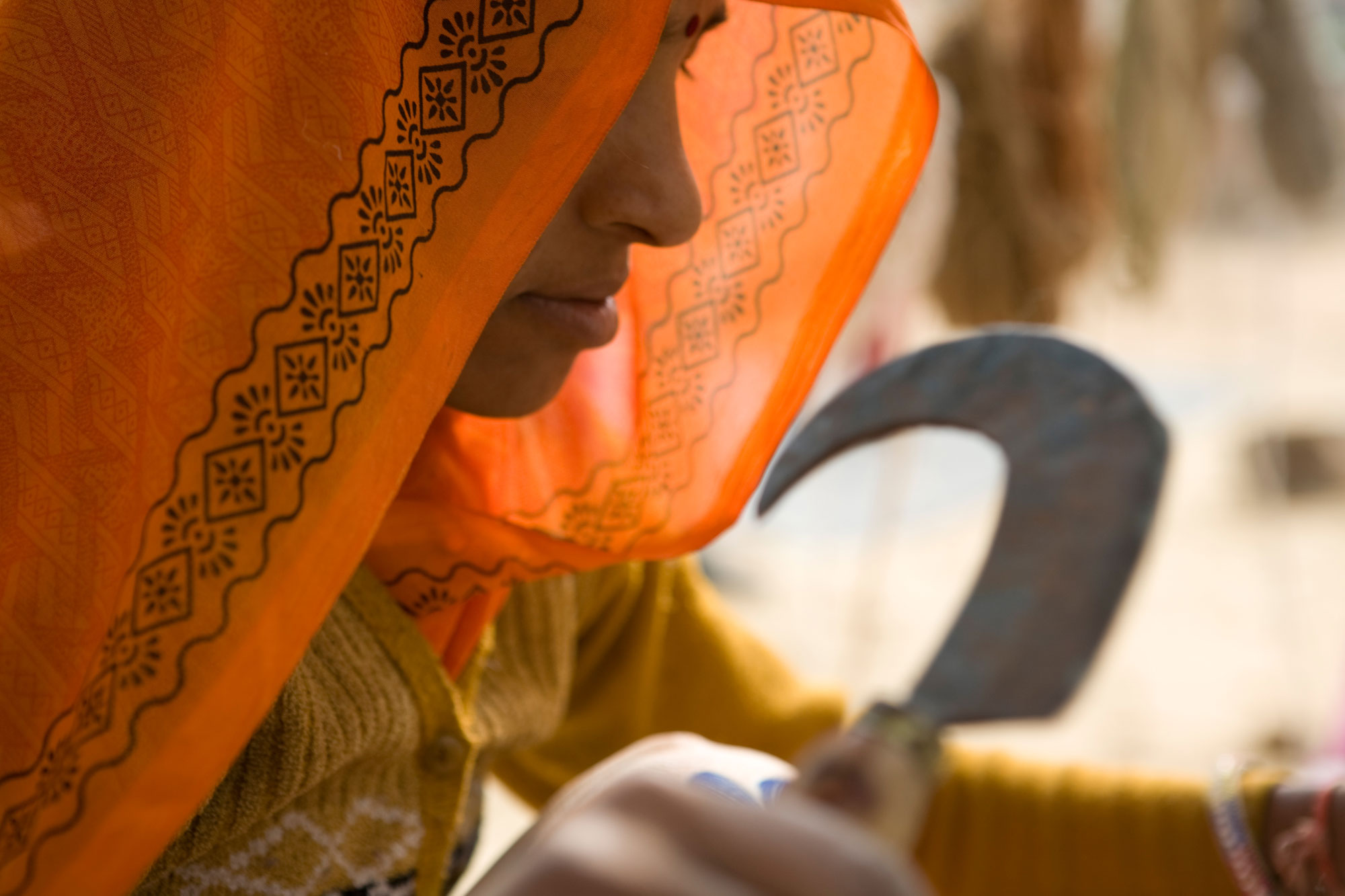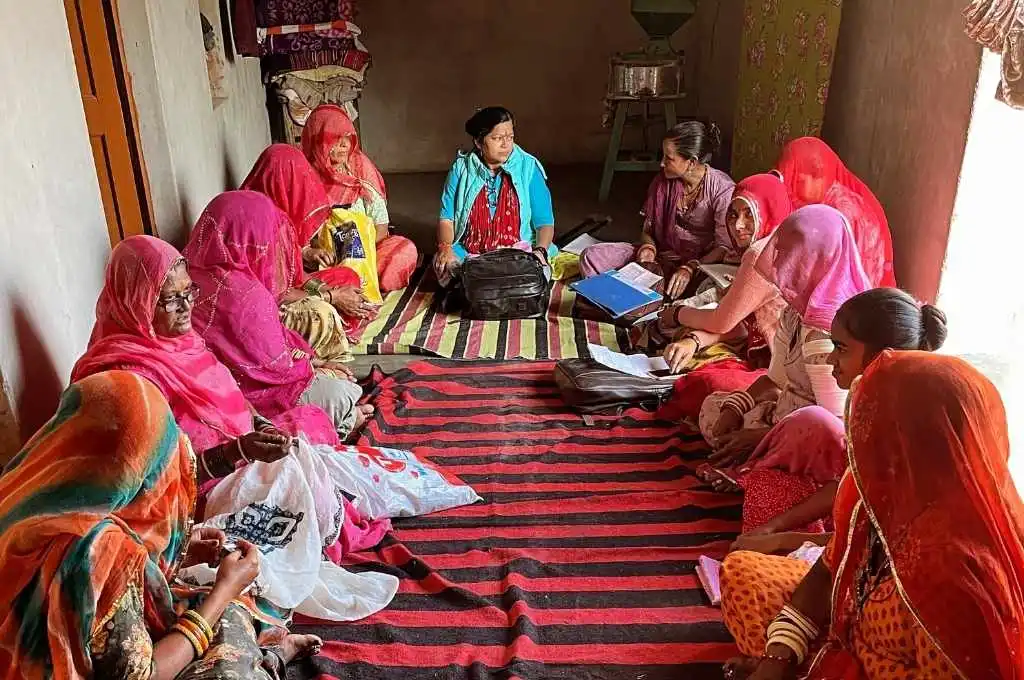“Auratein kam karti hain to purushon ko lagta hai ki unki shaan kam ho jaygi aur parivar ki maryada khatm ho jayega” (When women go out to work, men think their pride and their family’s honour will be destroyed).
The statement above was a response to a formative research exercise that Partners in Change carried out in June 2017, to inform Breakthrough’s intervention in the garment sector in Faridabad, Haryana. The research exercise was aimed at creating an enabling environment for women workers in the garment sector.
It’s a well-known fact that women’s workforce participation in India has been sliding rapidly. In 2004-05, the share of working-age women in paid jobs was 43%–the same as in 1993-94. This dropped to 27% in 2015-16*. In rural India, the slide has been much worse as women’s contribution to agricultural work is largely invisible and the sector has not generated employment for women formally.
India was ranked 108 among 144 countries on the economic participation and opportunities index in the Global Gender Report 2017.
Another report that is still in progress reports the percentage of women in the workforce across the city of Delhi as just 13%; if this is the situation in one of the largest metropolitan cities of the world, clearly something is terribly wrong somewhere.

The gender gap in the labour force is rooted in challenges that working women across the world face, including juggling work and family responsibilities, sexism at the workplace, unequal wage and unsafe work environments, lack of crèche and other facilities at work, and so on.
While all of these reasons are important to address, the scenario also needs to be studied from the viewpoint of the traditional roles women have played in society for centuries, and the patriarchal mindsets at play in India.
[quote]Gender equality in work is not possible without gender equality in society.[/quote]
The McKinsey Global Institute Report – The Power of Parity, on how gender inequality affects GDP and the economy of India, links, for the first time, gender equality in work with gender equality in society, saying that, “The former is not possible without the latter”.
“When jobs are scarce, men should have more right to a job than women.”
“When a mother works for pay, the children suffer.”
Reactions like these bring home the point that mindsets at work and home for women are intrinsically linked and that promoting positive gender relations in the workplace and within families together can lead to improving the rights and lives of women workers. In other words, gender attitudes inform society’s reaction to a working woman.
Related article: Financial inclusion: The key to closing India’s gender gap
Women’s mobility and family honour
The formative research mentioned earlier points out how women’s mobility is closely linked to their ‘honour,’ rather than their earning power or their ability to hold a position in a competitive work arena.
This view enables households and families to exercise greater control over women. For instance, respondents to the research said that because of this link to ‘honour’, they face a number of restrictions on how to behave, how to dress, whom to speak to and whom to not speak to, when they step outside the house.
As many respondents shared, their families feel that, “Once a woman starts working and earns money, she doesn’t have to depend on her husband and will take her own decisions in a small way. Gradually, the man will start losing control over her”.
Neighbours, too, ask questions–why is your daughter-in-law coming home so late? Who is the man she was talking to in the market? And families must constantly face such queries, steeped in the norms that the community follows. This—neighbourly interference—becomes another form of control over women.

Photo courtesy: Charlotte Anderson
During the street theatre shows that we at Breakthrough organise for these women on issues they face at home and at work, women acknowledge that many instances of domestic violence are triggered by the idea that men are unable to accept their wife’s newfound mobility.
While domestic violence is common even among women who do not go to work, the increased mobility is an additional reason for the violence. In a patriarchal setup, roles are clearly demarcated. So if a woman steps out of the home leaving her daily household duties behind, a disruption is bound to happen. For instance, women might ask their husbands to contribute, however little, in domestic chores. This is clearly viewed as not respecting the husband who is used to having his every whim and fancy catered to. The in-laws find it unacceptable too.
Related article: We need to talk about men
Connected to the whole question of honour and control, is the masculine construct of men being the main breadwinner in the family. A Breakthrough campaign on masculinity in 2016-17 spoke with more than 3000 men in Haryana about their wives stepping out of the home to work. We continue to use the campaign messages with the communities in Haryana and other parts of the country.
Men clearly linked this with honour – “Kya mein itna kamzor ho gya hoon, ki mera aurat ko ab kam karne nikalna parega?” (Am I so enfeebled that my woman has to now step out to work?). Many men feel their masculinity is being questioned if the women in the family step out of home to work.
Along with promoting inclusive workplaces and transforming gender relations within the workplace, empowering women workers to access their rights and advocating for behaviour change across the supply chain, there is an inherent need to address gender justice within families. We must also enable communities to look at working women with respect. One without the other will be like leaving a glass only half full.





